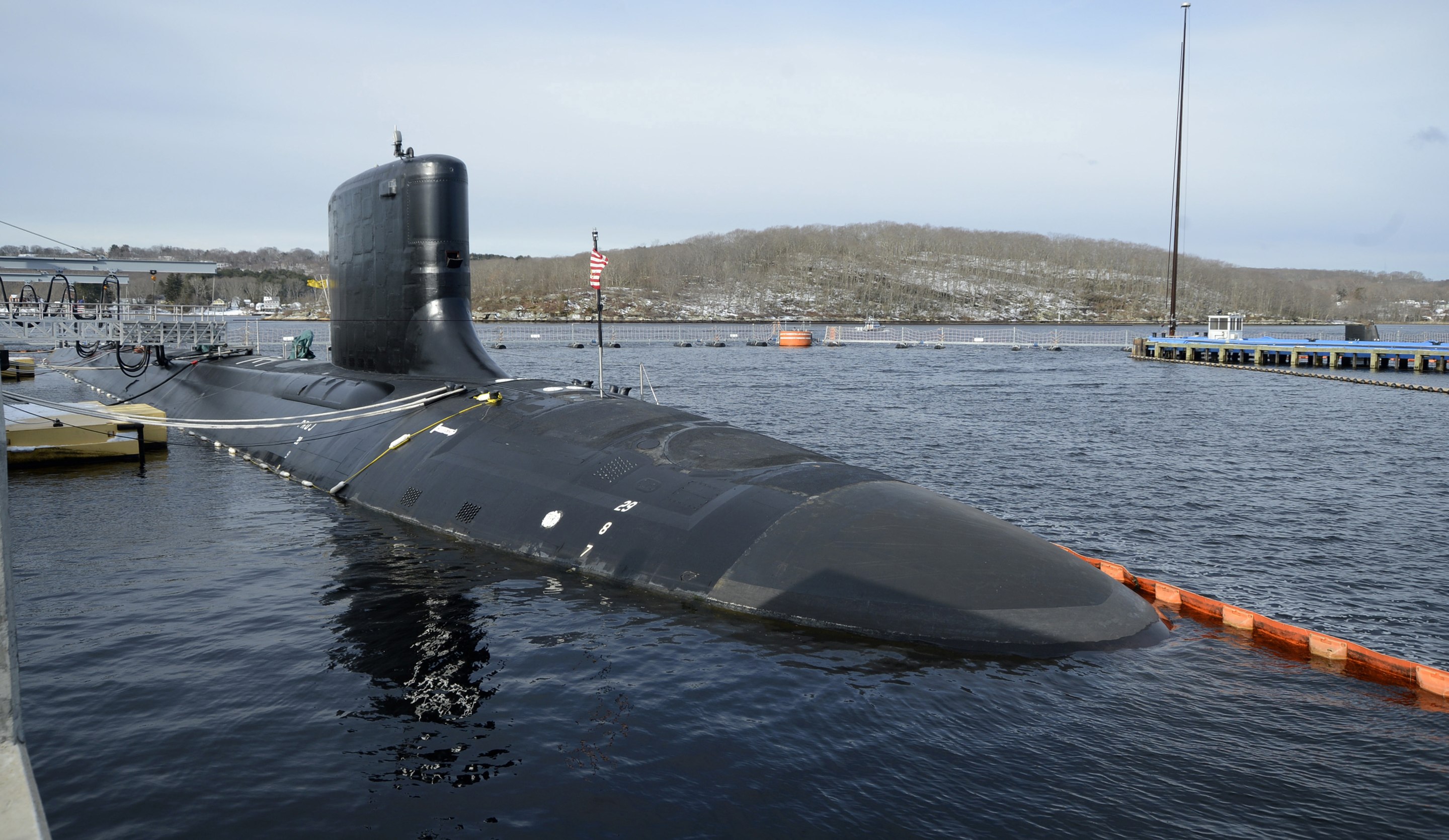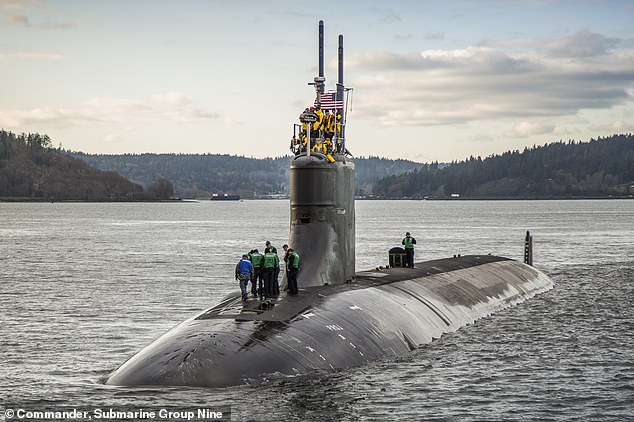Vladimir Danilov
NEW EASTERN OUTLOOK
If true, an alarming development for US Navy personnel assigned to these boats, but also perhaps a forced pause in the Empire's constant reckless provocations.
The submarine fleet has traditionally enjoyed the special favors of the top leaders in the United States. It is even known that in 1993 former US Vice President Al Gore made a trip to the Arctic aboard the USS Pargo nuclear submarine.
According to The National Interest, the US Navy announced in December 2016 that it needed 66 submarines with submarine-launched cruise missiles and strike missiles deployed. But in early 2019, there were only 51 attack submarines in the fleet. And that number is projected to decrease. For example, dozens of Los Angeles-class submarines will be decommissioned in the next few years, and too few new Virginia-class submarines are being produced.
At the same time, during the entire period of the US Navy’s operation of nuclear submarines, in addition to two disasters resulting in the loss of nuclear subs, there have also been about 60 incidents and accidents. As a result, the ships sustained various damages to their hulls, mechanisms, and outboard devices. The most significant number of accidents was caused by navigational failures, including navigation safety violations, loss of situational awareness by operators in difficult hydrological conditions, errors in the use of technical means, and the lack of regulation of certain activities of nuclear submarines in coastal areas of other states.
However, trespassing other nations’ maritime borders does not usually bring glory to American submariners. Moreover, dangerous maneuvering in areas challenging to navigate could have catastrophic environmental consequences in the coastal seas of foreign countries. Thus, according to various media reports, more than a dozen similar incidents occurred involving American submarines in the last twenty years alone, particularly the USS Baton Rouge and the USS Grayling in 1992-1993.
A very recent example in this regard is the collision of the USS Connecticut nuclear submarine “with an unknown object” in the South China Sea in October. The submersible sustained then damage to the bow and ballast tanks. Eleven US sailors were injured in the collision. Chinese analysts note that the incident occured east of the Paracel Islands, where the submarine may have practiced a simulated interception of Chinese submarines in the path of a US Navy carrier strike group. After an investigation, the US Navy fired the commander and chief mate of the USS Connecticut, and the operator of the submarine’s sonar system. Officially, the US Navy reported that a US nuclear-powered attack submarine allegedly collided with an uncharted underwater rock and was forced to leave the South China Sea for repairs. Moreover, as CNN highlighted, this unexpected clash came at a tense moment in USA-China relations and provoked sharp criticism from Beijing. However, various experts were puzzled by the explanation provided about the causes of the incident because of several inconsistencies. In particular, doubts are expressed that, having the latest hydroacoustic equipment, the Americans were unable to spot the underwater mountain, although military subs started identifying such objects as early as in the 1970s. So there’s a lot of speculations about the possible crew’s blatant incompetence, but it’s also possible that the official statement is meant to conceal what actually happened off the coast of China.
The said incident with the USS Connecticut received particularly close public attention after information was made public that the tragic end of the Russian nuclear submarine missile cruiser K-141 Kursk in 2000 had been allegedly caused by a collision with a NATO submarine tracking the Russian nuclear sub. It is noteworthy that the Pentagon declined to comment on this information.
And just the other day, all nuclear submarines of the US Navy were allegedly ordered to immediately stop navigation and return to their military bases. According to preliminary reports, the order involves the immediate cancellation of all missions in all regions of the world. According to the agency Avia. Pro, similar situations have never been recorded in the history of the US nuclear submarine fleet. The reason for this cancellation was allegedly some information that came to light due to the investigation into the USS Connecticut collision incident. No details are available, but according to various reports, there are some flaws in the design of nuclear submarines in service with the US Navy or even a possible hacker attack on the navigation systems of nuclear subs.
However, against this backdrop, the recent scandal draws attention which broke in the United States and was made public on November 9 by Agence France-Presse (AFP), after it was discovered that a former chief technician of an American company supplying steel for combat ships had falsified test results over a long period. In particular, according to the US Department of Justice, Elaine Thomas, 67, of Auburn, Washington, pleaded guilty to falsifying the results of tests that measured the strength and impact toughness of steel used in the US Navy submarines. Elaine Thomas, a former chief technician at Bradken Steel Works in Washington, admitted committing fraud for more than 30 years by assigning passing grades to steel that did not pass process tests. The Bradken plant is a leading supplier of cast high-strength steel used by major contractors such as General Dynamics and Huntington Ingalls Industries to build US Navy submarine hulls. Steel castings must meet the most stringent naval specifications for strength and toughness. However, the US Department of Justice said that about half of the Bradken castings failed laboratory testing. The fraud was detected as early as May 2017. Elaine Thomas used to work at the Bradken Foundry in Tacoma from 1977 until May 2017, having been named director of metallurgy in 2009.

The U.S. Navy attack submarine USS Colorado (SSN-788) sits pierside at Groton, Connecticut (USA), on 15 March 2018, prior to commissioning on 17 March. Colorado was the the U.S. Navy's 15th Virginia-class attack submarine.
According to US media reports, the US Navy has stepped up monitoring its submarines because of the revealed tampering with the Bradken plant’s steel.
However, another US incident in February 2020 drew attention when the USS Colorado, a submarine commissioned only in 2018, shed its stealth coating on its first 63-kilometer cruise after an upgrade, according to Forbes.
The views expressed herein are solely those of the author and may or may not reflect those of The Greanville Post. However, we do think they are important enough to be transmitted to a wider audience.
If you find the above useful, pass it on! Become an "influence multiplier"!
The battle against the Big Lie killing the world will not be won by you just reading this article. It will be won when you pass it on to at least 2 other people, requesting they do the same.
| Did you sign up yet for our FREE bulletin? It's super easy! Sign up to receive our FREE bulletin. Get TGP selections in your mailbox. No obligation of any kind. All addresses secure and never sold or commercialised. |
![]()
This work is licensed under a Creative Commons Attribution-NonCommercial 4.0 International License





